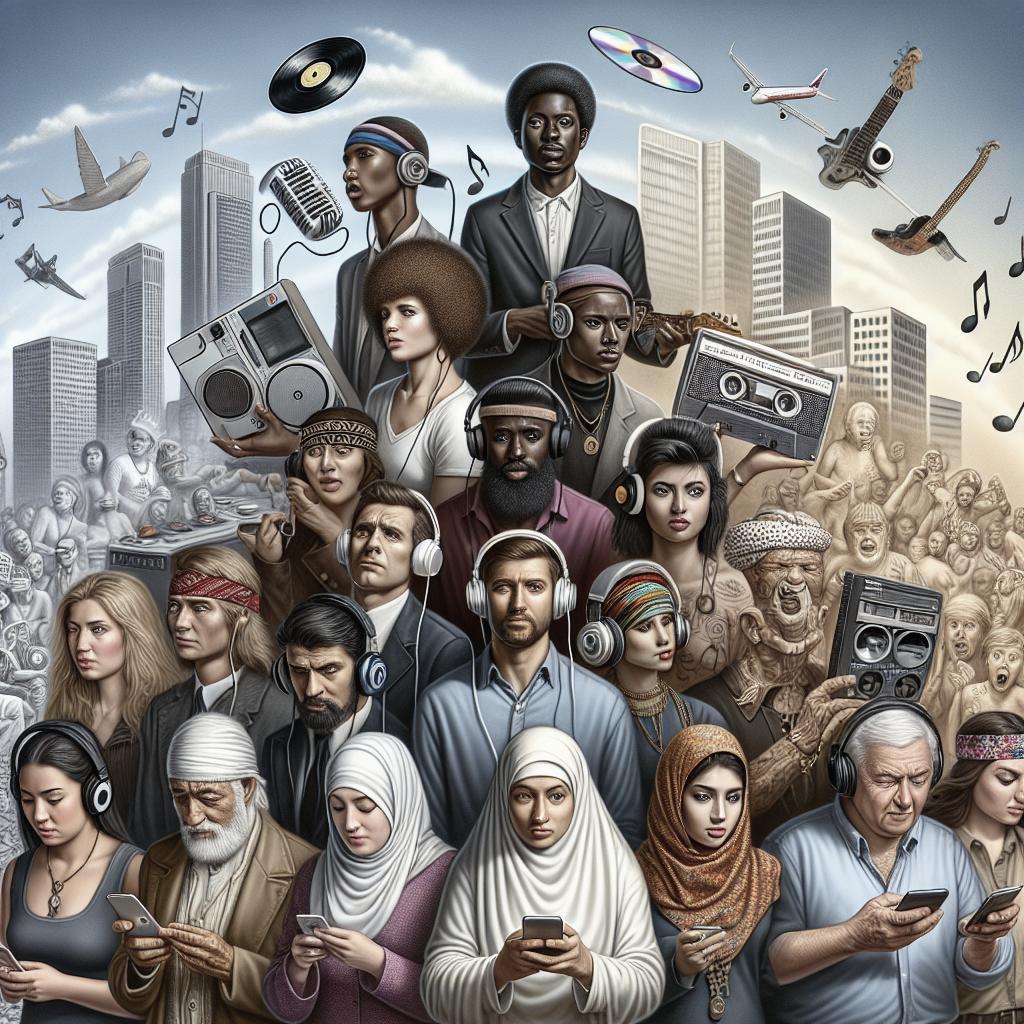How Music Influences Cultural Trends
Introduction:
Music is much more than a collection of melodies and harmonies. It acts as a mirror reflecting cultural shifts and societal norms while providing a universal language that transcends barriers. As an integral part of cultures worldwide, music not only influences social trends but also brings individuals together, fostering shared experiences and emotions. From determining fashion statements to impacting social movements, music’s influence on cultural trends is profound and far-reaching. This article delves into how music wields this power, the intimate relationship between music and culture, and how it unifies people across disparate backgrounds, ultimately exploring future possibilities of its cultural impact.
The Power of Music
Music is a potent force that shapes and reflects the world around us. Its ability to influence thought, emotion, and behavior is unparalleled, offering both solace and inspiration. Often regarded as a universal language, music effectively transcends geographical and linguistic boundaries, connecting people who might otherwise seem vastly different. This power becomes evident when we observe its role in uniting communities during significant social events and its ability to reflect societal changes.
The impact of music is evident not only in personal lives but also at cultural and economic levels. Music can take various forms – from empowering anthems and political protest songs to rhythm-infused dance tracks that spark new trends. Each form channels distinct aspects of human experience, allowing listeners to engage with the world differently. By affecting mood and perception, music plays a crucial role in the cultural narrative.
Moreover, music’s ability to adapt and evolve with time ensures its ongoing relevance. Whether through the adoption of new technologies or influences from different musical genres and cultures, music continues to inspire and mold cultural trends. This adaptability helps the music industry remain a vibrant and compelling space for creativity and expression.
The Relation of Music to Culture
Music and culture share a symbiotic relationship where each influences and shapes the other. Throughout history, traditional songs and musical styles have encapsulated the beliefs, stories, and practices of communities, thus playing a crucial role in cultural identity. For example, folk music often reflects the socio-economic conditions and collective experiences of a cultural group, providing insights into its history and evolution.
In modern times, popular music mirrors contemporary cultural trends, allowing artists to express their realities and resonate with a broad audience. Music often acts as a catalyst for cultural change, challenging existing norms and introducing new ideas. Genres like hip-hop, punk, and electronic music, for example, have been instrumental in redefining cultural, racial, and socio-economic boundaries.
Furthermore, globalization has enabled cross-cultural interactions, resulting in an eclectic fusion of musical styles. This blending brings new dimensions to cultural expressions, reflecting the diverse and interconnected world we inhabit today. Ultimately, music serves as a heartbeat of culture, constantly negotiating the space between tradition and innovation.
How Music Brings Us All Together
Sharing Emotions Through Music
Music’s emotional resonance transcends language, enabling people to communicate on a visceral level. A poignant melody or a heartfelt lyric can evoke emotions that resonate universally, bridging gaps between individuals from different backgrounds. This shared emotional experience unifies people, creating a collective sense of understanding and empathy.
Concerts and music festivals are prime examples of music fostering emotional connections within large groups. These events create atmospheres where emotions are shared openly, fostering a sense of solidarity among attendees. Music acts as a conduit for shared happiness, sorrow, and excitement, nurturing human connection.
Music Is an Activity That Promotes Bonding Over an Experience
Music provides a backdrop for social interaction, whether in informal settings like small gatherings or formal venues like stadiums. Listening and dancing to music in a group setting enhances social bonds and creates unforgettable shared experiences. This social dimension of music fosters long-lasting friendships and communal ties.
Furthermore, music’s intrinsic rhythm and movement encourage participation and engagement. Group activities like singing in a choir or performing in a band require collaboration and harmony, exhibiting music’s role in enhancing teamwork and community spirit. These interactions strengthen social cohesion, reinforcing the importance of music as a social glue.
Music Is a Highway of Shared Experiences
Throughout history, music has served as a record of shared experiences, documenting events and milestones that define cultures. From ballads recounting historical events to anthems symbolizing social movements, music crystallizes collective memory, providing a shared narrative through which people connect.
As digital streaming platforms and social media amplify music’s reach, shared experiences have entered a global realm. Today, a hit song can ignite an internet sensation, uniting people worldwide in a singular cultural moment. In this sense, music not only serves as a reflection of shared experiences but actively creates them, perpetuating its influence on cultural trends.
Future Prospects
| Aspect | Description |
|---|---|
| The Power of Music | Music’s ability to influence thought, emotion, and behavior, acting as a universal language that connects diverse individuals. |
| The Relation of Music to Culture | Exploration of how music reflects and shapes cultural identity, with genres serving as both mirrors and catalysts of cultural change. |
| How Music Brings Us All Together | The unifying power of music, fostering emotional connections, social interactions, and documenting shared cultural experiences. |


